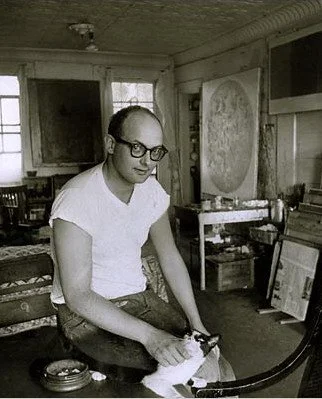Sol LeWitt (1928-2007)
Available Works
Biography
Solomon “Sol” LeWitt was an American artist known for his large scale wall drawings, and his work in conceptual and minimalist art. LeWitt was born in 1928 in Hartford, Connecticut, where he was raised by Russian Jewish parents. His interest in art was fostered from an early age, when his mom took him to art classes at the Wadsworth atheneum. Wanting to become an artist but also satisfy his mothers desire for him to receive a degree, LeWitt attended Syracuse University, where he was introduced to printmaking. Upon graduation, LeWitt was drafted to the Korean War in 1951, where part of his job consisted of designing posters. While serving, he frequently visited gardens, temples, and shrines in Japan and Korea, places that served as creative inspiration. After being discharged, LeWitt took design classes and got a job at an architecture firm as a graphic designer. His work in architecture later inspired his interest in returning to basic composition and form in his structures. He later took a night position at the Museum of Modern Art, where he met fellow artists who were frustrated with the increasingly stale ideology of Abstract Expressionism. During this time, LeWitt began experimenting with what he called “structures,” large sculptures which relied on color, form, and composition, and which he considered as returning to the fundamentals of art. Some of his best known pieces in this style are his cinder block structures, a centerpiece of the minimalist movement. LeWitt’s vision captures the transition from modern to postmodern, and his work is still available in public spaces across the US, including the Massachusetts Museum of Contemporary Art, which will have a comprehensive retrospective of his work on display until 2033.

